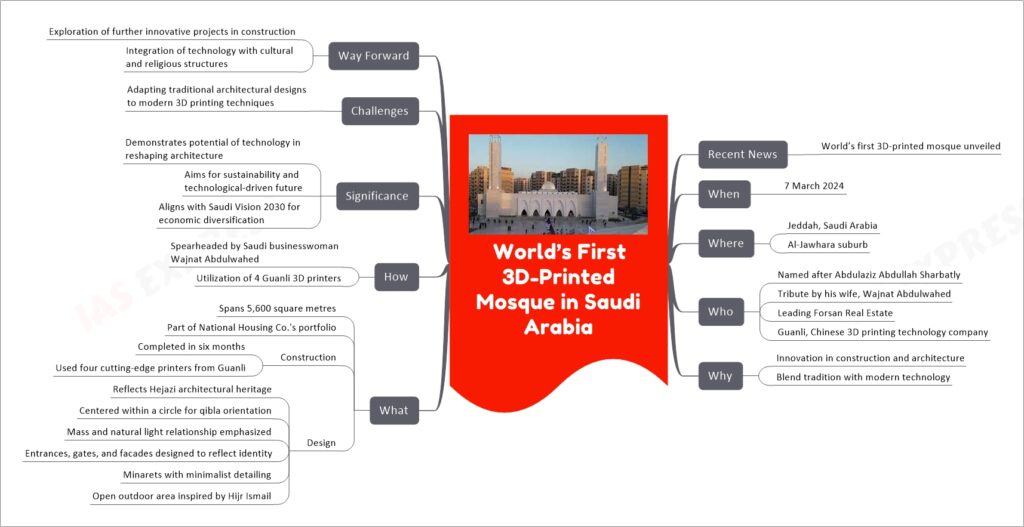World’s First 3D-Printed Mosque in Saudi Arabia

The world’s first 3D-printed mosque, unveiled in Jeddah, Saudi Arabia, marks a significant milestone in construction and architectural innovation. Named after Abdulaziz Abdullah Sharbatly, the mosque is a tribute by his wife, Wajnat Abdulwahed, and spans 5,600 square meters in the Al-Jawhara suburb. This project, completed in just six months using cutting-edge 3D printing technology from the Chinese company Guanli, demonstrates the vast potential of modern techniques to reshape traditional architectural practices. The design of the mosque, which reflects Hejazi architectural heritage, is centered within a circle for accurate orientation towards the qibla, with attention to the relationship between the building’s mass and natural light. This innovation aligns with Saudi Vision 2030’s objectives for economic diversification and represents a bold step towards a more sustainable and technologically-driven future.
If you like this post, please share your feedback in the comments section below so that we will upload more posts like this.

